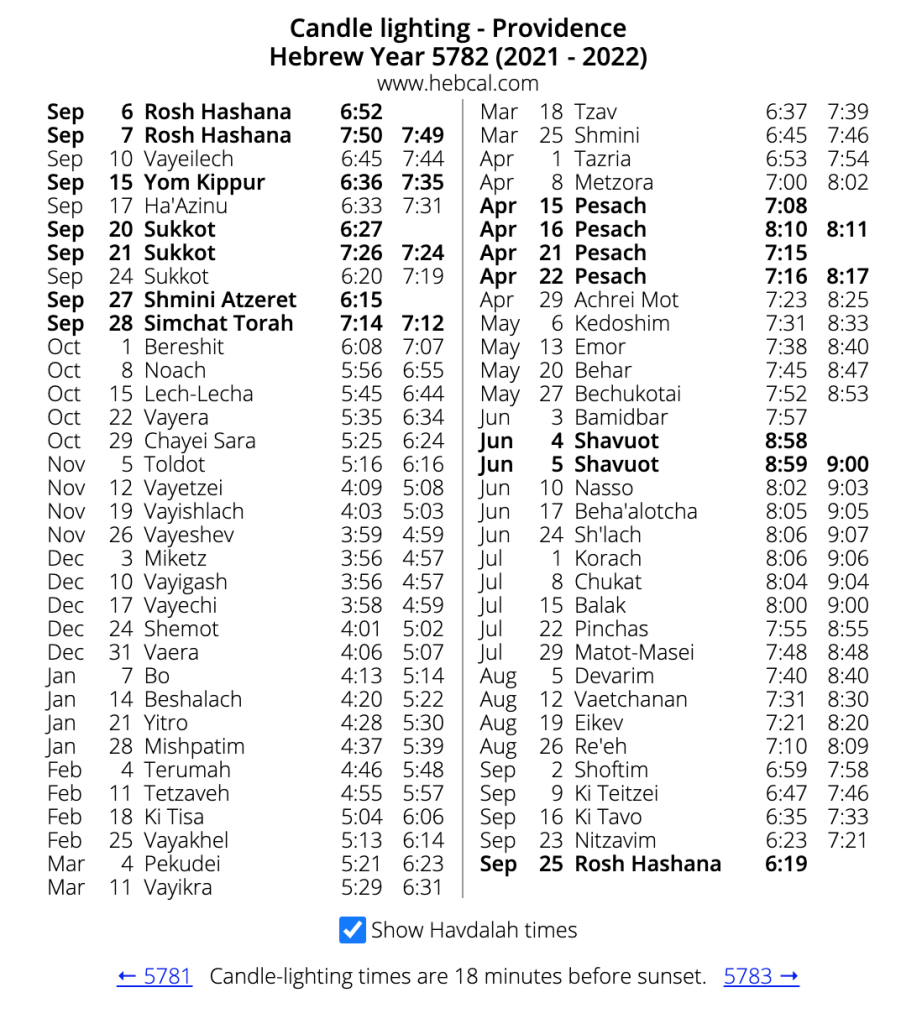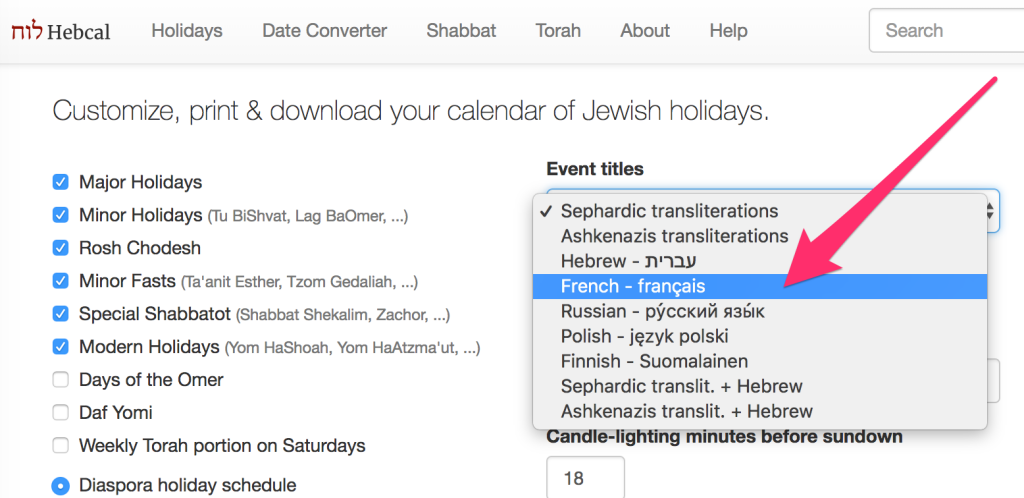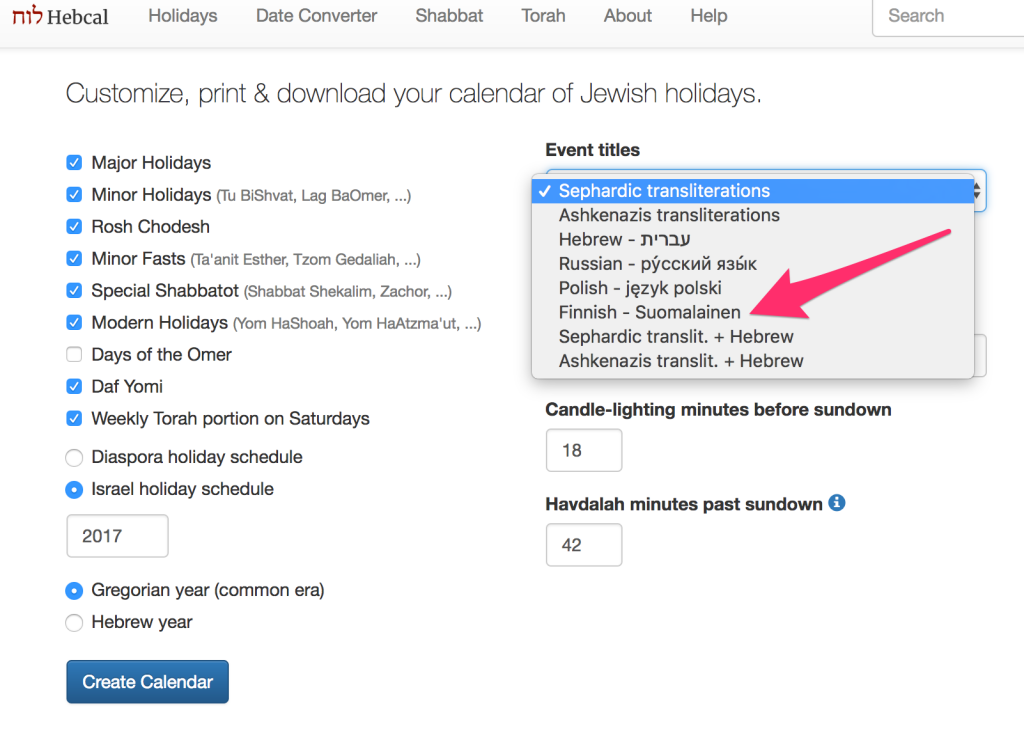At the conclusion of Gregorian year 2020, we’d like to express our thanks and gratitude to all of our Hebcal.com users. Our mission is to increase awareness of Jewish holidays and to help Jews to be observant of the mitzvot, and many of you have been visiting our site for calendar updates and Hebrew date conversion for years.
Here is a summary of updates we’ve made to Hebcal.com during the past 6 months.
Yahrzeit, Birthday and Anniversary calendar
We now offer annual email reminders for our Yahrzeit, Birthday and Anniversary calendar. After entering and confirming your email address, you will receive a reminder email 7 days before each anniversary. Our email privacy policy is the same as for our Shabbat weekly email list: We will never sell or give your email address to anyone. We will never use your email address to send you unsolicited offers.
In addition, Yahrzeit and anniversary calendar downloads for Apple, Google & Outlook now support more than 3 names. Just click the “+ Add another name” button to create another row and enter the additional details.
Zmanim (halachic times)
In August 2020 we updated our solar calculation engine, which has enabled several new features:
Havdalah can now be calculated according to tzeit hakochavim, the point when 3 small stars are observable in the night time sky with the naked eye. The new default Havdalah option is calculated when the sun is 8.5° below the horizon. This option is an excellent default for most places on the planet. We still offer the option to use a fixed number of minutes past sundown (e.g. 42 min for three medium-sized stars, 50 min for three small stars, 72 min for Rabbeinu Tam) which works well for Israel, most of the USA and Europe.
Fast start and end times are now provided for major fast (Tish’a B’Av) and minor fasts (Ta’anit Esther, Tzom Gedaliah, Tzom Tammuz, Asara B’Tevet, & Ta’anit Bechorot). Minor fasts begin at alot hashachar (when the sun is 16.1° below the horizon in the morning) and end when 3 medium-sized stars are observable in the night sky (when the sun is 7.083° below the horizon in the evening). Tish’a B’Av fast begins at sundown and ends when 3 medium-sized stars are observable.
Chanukah candle-lighting has been updated to occur at dusk on weekdays (when the sun is 6° below the horizon in the evening). To avoid any conflict with Shabbat, candle-lighting times for Chanukah on Friday night are 18 minutes before sundown (same as regular Shabbat candle-lighting) and at regular Havdalah time on Saturday night.
Language support
Earlier in December, we added Spanish language support for event title translations and transliterations. Hebcal now supports the following languages:
- Sephardic transliterations
- Ashkenazis transliterations
- Hebrew – עברית
- Spanish – español
- French – français
- Russian – ру́сский язы́к
- Polish – język polski
- Finnish – Suomalainen
- Hungarian – Magyar nyelv
- Sephardic translit. + Hebrew
- Ashkenazis translit. + Hebrew
These languages are fully supported on the Custom Calendar generator and its associated export formats (Apple, Google, iCalendar, CSV, Print PDF) and the printable Candle-lighting Times Year at a Glance (“refrigerator times”) page.
Torah Readings
Holiday Torah readings are now included in the description/memo section of Apple, Google, & Outlook calendar feeds and our downloadable Torah reading spreadsheets (aliyah-by-aliyah breakdown especially useful for synagogue or minyan leyning coordinators). Previously only regular Shabbat Torah readings were included.
Aliyot for special Shabbatot that include three Sifrei Torah have been improved. We read from three Sifrei Torah when Rosh Chodesh coincides with Shabbat HaCodesh, Shabbat Shekalim or Shabbat Chanukah. Although some minyanim have the custom of reading 8 aliyot, we now take the more common approach of including the typical 7 aliyot for Shabbat. The 1st Sefer Torah is for regular Torah reading (aliyot 1-6), the 2nd Sefer Torah is read for the 7th aliyah for Rosh Chodesh (Numbers 28:9-15) and the 3rd Sefer Torah is read for the maftir aliyah (the special Shabbat).
Triennial Torah reading is now supported for Hebrew years 5745 through 5830 (Gregorian years 1984 – 2070).
Parsha detail pages now take into consideration the differences between the Israel and Diaspora sedra schemes. For example, in the year 5782 Parashat Achrei Mot is read on April 30, 2022 in the Diaspora and on April 23, 2022 in Israel.
Miscellaneous
Hebrew Date Converter now lists holidays and Parsha HaShavuah for any date from the year 0001-9999. Previously it converted dates but only mentioned holidays & parsha for years 1900-2099.
When the 9th of Av falls on Shabbat and the Tish’a B’Av fast is postponed to the 10th, the calendar event now says “Tish’a B’Av (observed)”.
The Hebrew typeface used on the website is now SBL Hebrew Font (copyright Society of Biblical Literature and Tiro Typeworks). This typeface is a more traditional serif style, which improves legibility.
We have discontinued support for Palm DateBook Archive calendar downloads.


